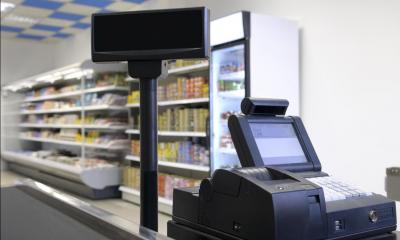
Convenience retailing is big business, with many consumers now choosing to make fewer large 'shops' and top up more often from convenience stores instead. Our practical guide will help you start up and run your own convenience store.
- Research the convenience store market
- Establish your customer profiles
- Decide which products your convenience shop will sell
- Decide which services to offer
- Fairtrade
- Buy an existing convenience store
Research the convenience store market
Estimating demand for a new convenience store
It's very important to find out whether there is going to be enough demand in your area for your convenience store. First of all, it's a good idea to check out the competition. Count how many outlets there are already in your area selling convenience lines. Convenience lines include items like tobacco products, newspapers and magazines, confectionery, soft drinks, snacks, alcohol, fresh products, fruit and vegetables, food-to-go, bread, milk, chilled foods and other 'top-up' or 'emergency' items.
Make a note of which outlets belong to a symbol group - like Spar - and which are independent. Don't forget to note down outlets such as petrol filling stations - most of these have introduced convenience groceries and other items into their forecourt shops. Traditional newsagents have moved into convenience store lines too. The major supermarkets have opened up many smaller c-store outlets as well and plan to open even more.
Catchment area
It would be a good idea to note down the different types of potential customer living and working in the area where your business will be. This will help you to determine the range of products and services that you will offer. For example, if there are many workplaces you might have a thriving breakfast and lunchtime take-away trade. You could also try stocking a range of ready meals for people to buy on their way home. If there are blocks of sheltered housing for elderly people you might do well to offer a delivery service.
Why will customers choose your convenience shop
Think about what you can do to make sure that enough customers choose your shop rather than any existing outlets. Check out the competition to see:
- what range of food and non-food products they offer
- what services they offer
- what prices they charge
- what their opening hours are
- what type of customer they are attracting
- if the premises and fittings are modern and smart
This might immediately show you that there is a gap in the market for a certain type of convenience store. For example, none of the outlets in your area might sell a good range of food-to-go, or open during the evening, indicating an opportunity for your business.
Find out what people want
It is a fact of life that small independent outlets can find it hard to survive. It is essential that you talk to as many local people as possible (after all, they will be the ones using your shop) to find out:
- what sort of products they would want you to stock
- what opening hours would suit them best
- whether they would support services such as a newspaper delivery round or home delivery of groceries
- what they think of your proposals in general
- what, if anything, don't they like about the existing shops in your area
Research current trends, plus legal and tax issues
- Shopping in convenience stores
- Legal issues for convenience stores
- VAT rules concerning convenience stores
Establish your customer profiles
Your market
You may have several different types of customer, for example:
- working people buying their papers, breakfast, lunch, snacks or the odd grocery item on their way to or from work. Many of these people may not live in the area
- local residents such as young families, elderly or unemployed people who are in the area all the time
- local residents who work elsewhere and who return in the evenings and at weekends
- local businesses which buy items such as newspapers, milk, tea, coffee and so on
- people on the move, provided you have some parking nearby
- trade customers, to whom you supply goods at a discount
Each category of customer may buy different types of goods. Many of your customers will be regulars, with whom you will build up a personal relationship.
Special offers and discounts
You might offer your customers a discount on some lines, or have 'two for the price of one' promotions. If you do, this might attract more customers so you sell more - or, on the other hand, you might not get any extra customers and you will receive less income into the bargain! Check out the local opposition for ideas and keep a close eye on any special offers you do make to be sure they are working for you.
Decide which products your convenience shop will sell
You are unlikely to have the space or the resources to be able to compete with the supermarkets on price, or the range of groceries stocked. Successful c-stores have:
- reduced the amount of space given to general groceries and household goods
- concentrated on 'top-up', emergency and impulse buys
- introduced fresh products, fruit and vegetables and food-to-go. Some have expanded the range of organic products and local produce stocked
Items typically sold by c-stores include:
- staples such as bread and milk
- snacks, cakes, sandwiches, take-away food, fast food, chilled ready meals
- a range of dairy products like butter, cheese, yogurts and other desserts
- alcohol and soft drinks
- coffee-to-go and other hot drinks
- fresh fruit and vegetables
- newspapers and magazines
- cigarettes, tobacco and vapes
- confectionery
- a small range of essential household and grocery items such as pet food, toilet paper, tea and coffee and so on
You might also stock a range of Fairtrade products such as sugar, tea, coffee and fresh fruit.
Individual customers may only spend a small amount of money, but ideally they pop in and out of your shop very frequently.
Decide which services to offer
What has been happening in the convenience store sector
Convenience stores have grown out of what used to be grocers or newsagents and, more recently, petrol filling station forecourt shops. Because many people do the bulk of their household shopping at the supermarket these days, the small 'corner shop' has had to adapt to survive.
In the last few years there has been:
- strong demand for convenience or 'top-up' lines rather than basic groceries
- an increase in demand for snacks, impulse and take-away food items, including fresh foods
- a trend towards longer opening hours
- greater demand for grocery delivery services
- the spread of the supermarkets' successful c-store formats such as Tesco Express
- the rapid growth of multiple c-store chains
- an improvement in the standard of convenience store premises and the product ranges they offer
- pressure on prices as a result of competition
- increased regulation of the food sector and the introduction of food legislation
- the introduction of smoking bans and legislation banning displays of tobacco products in shops
- a ban on selling alcohol in England and Wales below the combined cost of the duty and VAT
- the introduction of minimum unit pricing on alcohol in Scotland and Northern Ireland
- a steady increase in the number of people buying their groceries online
- a big increase in the number of people shopping in discounters like Aldi and Lidl
Although there is a demand for well-run neighbourhood shops, they face keen competition and many independents have joined symbol groups in order to improve their chances of survival.
You will have to decide whether:
- demand will be high enough in your area to support your proposed business. If you plan to locate in a rural area, there simply may not be enough customers
- your local economy is healthy - if your area has suffered from many business failures, it is unlikely that local people will shop anywhere other than the cheapest supermarket
- you will be able to compete against other c-stores, discounters, supermarkets, newsagents and petrol filling stations, all of whom are looking to sell into the same market
Keeping up to date with the convenience store sector
Joining a trade association is an excellent way of staying up to date with developments in the trade.
The Association of Convenience Stores (ACS) represents convenience stores. The ACS produces an annual Local Shop Report which contains a great deal of material of interest to all those operating in this market. They also carry out regular crime surveys and produce advice guides covering many aspects of convenience retailing. Visit the ACS website for details.
The Scottish Grocers Federation supports independent food retailers in Scotland and publishes a number of reports on the grocery sector. These are available on the Scottish Shop website. The Institute of Grocery Distribution (IGD) works with the grocery and food sectors to provide a wealth of information.
Retail NI was set up to protect and enhance the independent grocery retail sector in Northern Ireland. Visit the Retail NI website for further information.
Subscribing to a trade journal or joining a sector-specific social media group are other excellent ways of staying up to date. Convenience Store magazine carries latest news and features of interest to the sector and is available from William Reed Business Media, Broadfield Park, Crawley, West Sussex RH11 9RT. William Reed also publish The Grocer.
Fairtrade
Recent years have seen an increase in consumer demand for ethical products that help producers and farmers in the developing world. You could meet this demand by stocking a range of Fairtrade products such as sugar, tea, coffee, fresh fruit and so on. This would show potential customers that your business is ethically aware and committed to fighting global poverty. Offering Fairtrade products can also be a good way to differentiate your business from its competitors.
What is Fairtrade
Fairtrade guarantees a fair deal for disadvantaged producers and farmers by making sure they receive a fair price for their work and goods. Fairtrade items are generally slightly more expensive than similar products - but more and more people are happy to pay a little extra to help producers become self-sufficient. All Fairtrade products are marked with the easy to recognise Fairtrade Mark and there is a huge range available.
How does it work
The Fairtrade system works by paying producers a set minimum price for their goods, giving them a living wage. On top of this, producers also get an extra sum of money to invest in their business or community. This is called the 'social premium'.
In return, Fairtrade producers must meet certain standards. These are set by Fairtrade International, which is the global umbrella organisation for Fairtrade. Producers must be certified by FLO-CERT before they can mark their products with the international Fairtrade Mark.
Pricing Fairtrade items
When you buy Fairtrade goods from a wholesaler or registered manufacturer, you can probably expect to pay a little more than you normally would for similar products. The slightly higher trade prices cover the set price and social premium that are paid to the farmer or producer, as well as supply chain costs and the cost of certification and product licensing.
Although trade prices for Fairtrade products are higher, you can probably charge your customers a little bit more for them. You may benefit from extra sales, too. The Fairtrade Foundation isn't involved in setting retail prices, so the mark-up you add is entirely up to you. While you'll want to cover your costs and retain a healthy profit margin bear in mind the purpose and aims of Fairtrade when you set your prices. The Fairtrade Foundation makes it clear that profit margins on Fairtrade items shouldn't be higher than on similar products.
Promoting Fairtrade goods
Offering Fairtrade products can be an attractive selling point for your business and can help to attract ethically aware customers. So it's important to make sure that potential customers know about the Fairtrade products you stock.
The Fairtrade Foundation is responsible for promoting Fairtrade in the UK and can provide useful materials and advice to help you to advertise your Fairtrade ranges. Any promotional materials that contain the Fairtrade Mark, like posters or leaflets, must be approved by the Foundation.
The Fairtrade Foundation organises a Fairtrade Fortnight each year to promote the Fairtrade system. This could be a good time for you to raise customer awareness about the Fairtrade products that you offer. For example, perhaps you could hold a Fairtrade tasting evening or suggest recipes that customers could make using the Fairtrade ingredients that you sell. You could also put up posters in your outlet promoting the benefits of Fairtrade and informing customers what Fairtrade products you stock.
Where to find out more
The Fairtrade Foundation is part of the international Fairtrade movement and oversees all aspects of Fairtrade in the UK - including retailing. For more information on Fairtrade, the range of products available and how you can get involved visit the Fairtrade Foundation website.
Buy an existing convenience store
You might decide to buy an existing business rather than start your own convenience store from scratch. Buying a going concern can mean that:
- the premises, fixtures and fittings are already in place
- there are established customers
- the business can generate income immediately
- suppliers have been identified and relationships established with them
- the business has a track record which can help if you are looking for finance
- staff may already be in place
However, look critically at any business that you are interested in to make sure that the price you negotiate with the seller is a fair one. Try to establish why the business is for sale - for example, is the owner keen to retire or is there another personal reason for selling up.
Your market research into the sector as a whole and the locality in particular will help you to establish whether or not the owner is selling because he or she can no longer generate enough income from the business. This may not necessarily deter you - many business people are confident that they can turn a failing business around. The important thing is to have established the current position so that the price you pay for the business is not too high.
Other matters to consider include:
- the state of the premises, fixtures and fittings and so on. Will you have to spend money refurbishing or replacing assets
- the condition of any stock you are buying. Check this over carefully before agreeing a price - identify any damaged or soiled items and make sure any perishable goods are well within their sell-by dates
- existing staff rights
- how to retain key personnel once you've taken over
- does the business owe money that you will be responsible for
- if you are paying for goodwill, to what extent does this depend on the skills and personality of the seller
Ask your accountant to look critically at the business accounts for the past three years and discuss with him or her the selling price in the light of what the accounts reveal. Make sure you budget for other professional fees such as legal fees and valuation and survey costs.



